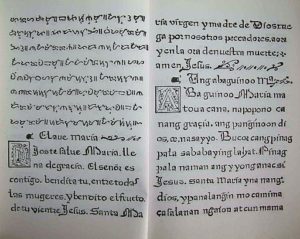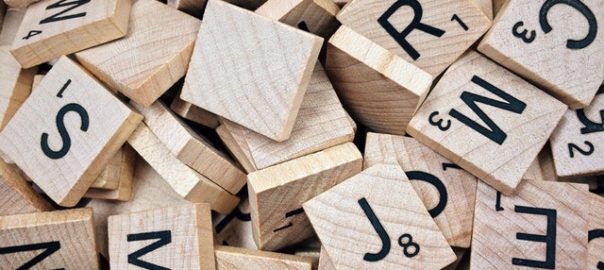Does Tagalog have its own alphabet? Or, does Tagalog have the same alphabet as the English alphabet?
Long time learners or the language might tell you it doesn’t. They’re wrong.
You’ll be surprised that the Tagalog, or should I say Filipino, has its own alphabet.
I’d even say it’s more appropriate to call the language “Filipino” here, because we’re talking about the language academically.
Uhmm… What’s the difference between Tagalog and Filipino? In a nutshell, Tagalog is what the language is called in everyday life, and for an academic setting, you might want to call it Tagalog. (Read: How to use Tagalog vs Filipino vs Pilipino and More!)
Well, to understand it, we might even say that Filipino has three alphabets. Or at least two that fell out of disuse, and one that’s used 99.999998% of the time.
Okay, hop into your time machine and let’s go.
Baybayin, the Pre-Hispanic Script
Before the arrival of the Spanish colonizers in the 16th century, some native Tagalog-speaking societies used Baybayin. (I’m using the word “Tagalog” here, since there was no “Filipino” yet. (Read our: Nerd’s History of Tagalog)
Some people also refer this script as “Alibata” but it’s more correct to describe it as “Baybayin” as the former was a newer word coined by an academic based on an erroneous assumption it is an Arabic based script.
Of course, the Spanish colonizers heavily changed the culture, so much so that it has heavily-influenced Tagalog in deep way. After all, they stayed as Philippine colonists for three centuries. (Read: Are Tagalog and Spanish similar?) Part of this was the introduction of Latin letters to write the Tagalog (like our English alphabet).

Don’t worry if you don’t learn it, if your goal is communicate with Filipinos.
It maybe fun to learn, though most Filipinos won’t have a clue on how to write a single letter of Baybayin, though they have have remembered seeing it in school.
Lately however, there has been quite a resurgence of Baybayin. Enthusiasts have been promoting this way of writing Tagalog as a way to call back to our “original” Filipino culture. It has even become somewhat of fashion trend, with lots of young people getting tattoos in Baybayin.
Now, you can even download a Baybayin font for your computer.
Take note that there were quite a number of indigenous Filipino scripts used to write a number of languages in Philippines before the Spanish colonial era. (Here’s a CNN article on this.)
The wikipedia article on Baybayin is pretty dope.
The Abakada – This was used for a long time!
Title says it all. The official story line goes that the Abakada was developed in the early 19th century. However, as one can imagine, the Spanish colonizers have been romanizing Tagalog since they got to the Philippines.
These are the 20 letters of the Abakada: A B K D E G H I L M N Ng O P R S T U W Y
The name “Abakada” comes from the pronunciation of the first four letters, A B C D.
When reading out the consonant letters of this alphabet, one has to add the long vowel “a” sound (like the start of “apple”). Hence, Aa – Ba – Ka – Da.
This was taught when I was kid in the 80’s, so it’s been around for a long time.
Looks quite like the English alphabet right?
Yup. It was developed due to confusion arising in using all the letters that the Spanish were using. Most modern Tagalog words use the letters in the Abakada as these are the sounds or phonemes that make up traditional Tagalog.
Notice anything?
Compared to English, it lacks C F J Q V X W.
Also it has a letter that isn’t in either English or Spanish: “Ng.” It’s read “en-gie” (N, G) and pronounced “nang.”
Of course, with all the loan words seeping into Tagalog, this soon was no longer sufficient.
Here comes the Modern Filipino Alphabet!
In 1987, the Modern Filipino Alphabet was officially adopted, adding all the new letters Filipinos use today.
This alphabet contain all the 28 letters used in English: A B C D E F G H I J K L M N Ñ Ng O P Q R S T U V X Y Z
On top of the 26 English alphabet letters, this alphabet also contains the Ng from the Abakada and the Spanish Ñ (pronounced “enye”) which Filipinos were already using at the time.
Of course, people in the Philippines were already using these letter, so it was more of just recognizing the realities of language at the time.
Of course, there’s no need to get a new font to type the Modern Filipino alphabet. Just use the regular English keyboard. Ñ is a pretty common letter worldwide due to the popularity of Spanish, so most typing or encoding systems have it. If you can’t figure out how to type it one your device, just substitute it with a plain boring old “N.” No one will mind, really.
As for the Ng. While it’s a distinct letter in the Modern Filipino Alphabet, you can just type out Ng using the two letters N and G, like I just did with my keyboard right now because there isn’t really a separate Ng key.
Conclusion
So there we have it folks. Before the Spaniards came, it was the Baybayin. They it slowly fell out of disuse. They later came out with the Abakada to standardize spellings. In 1987, they packed in all the letters of English.
Hope you liked it.
